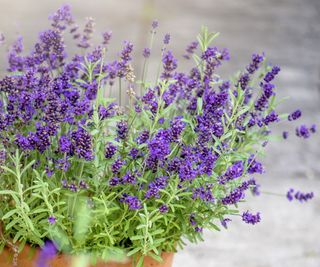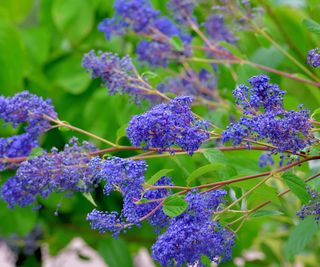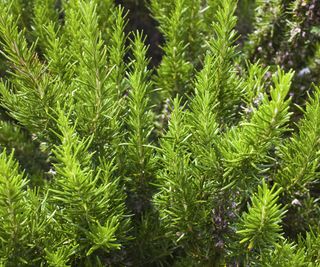Division is a clever way for gardeners to increase their plant collection. If you're looking to learn a new propagation technique this year, learning to divide plants is an interesting and cost-effective way to add more plants to your garden borders.
Many perennials and shrubs can be propagated by division with relative success (such as hellebores), but other plants are best left alone and should not be moved or divided. For this reason, planting in the right location is important, and it's always best to take your time and make a well-thought-out decision when planting new perennials or shrubs in your garden.
We've compiled a list of plants that don't want to be disturbed, including popular perennials and herbs. While there's always a chance for success, and plants have a way of surprising us gardeners, you should avoid lifting or moving any of the plants below, or you risk losing your precious plants.
(Image credit: Getty Images/Burton0215)
Plants that should not be moved or divided
Division is a propagation method that is often carried out in autumn or spring. If you're looking for flower bed ideas, plants such as hellebores and peonies are ideal perennials that divide well, allowing you to increase the number of plants in your flower beds. However, many plants don't like to be disturbed, so refrain from moving, lifting or dividing the plants listed below:
1. Lavender

(Image credit: Getty Images/Jacky Parker Photography)
You may know how to grow lavender, but it's important to remember that like other woody shrubs and herbs, lavender plants do not respond well to being lifted, moved or divided.
“Many perennial herbs, such as lavender and sage, should not be moved,” says plant expert and Honorary Master Gardener Susan Betts. “Once established, these plants don't like to be disturbed.”
“When planting, remember the important rule of planting the right plants in the right place,” says Susan. “Your lavender and sage plants need to be in a place where they can thrive and remain.”
To prevent woody lavender from growing in your garden, be sure to prune the plant annually to maintain a compact, healthy shape.
English lavender can be purchased online from Nature Hills.

Social Links Navigation
Plant Expert
Susan Betts is an author, garden communicator, lecturer, and conservationist specializing in herbs and native plants. For over 35 years she has been actively cultivating and using herbs to educate the public about gardening and the natural world. She is an Honored Master Gardener and a member of the International Herb Society, Garden Communicators, Ecological Landscape Alliance, and the National Garden Bureau. Susan is a life member of the American Herb Society.
2. Burning Bush

(Image credit: Getty Images/TobyPhotos)
An unusual perennial, Burning Bush (Dictamnus albus) is an eye-catching cottage garden plant with attractive upright flowers. Burning Bush is a unique, long-flowering perennial native to the edges of many forests in Europe, North Africa and Asia.
“These plants develop long taproots that make them difficult to transplant or divide,” says Susan, “so it's best to choose a location where the plant can continue to grow and thrive throughout its life cycle, which can last several decades.”
Burning Bush plants can take up to three years to flower, making this perennial a plant for patient gardeners.
3. California Lilac

(Images courtesy of Getty Images/Photos of Japan, Asia and the rest of the world)
California lilac is a long-time favorite among gardeners thanks to its profusion of lilac-blue flowers. What's more, this flowering shrub, which grows in a sunny spot, is also known as a pollinator favorite, attracting bees, birds and butterflies throughout the spring and summer.
“Plants that should never be moved, lifted or separated include several taproot plants that are native to California, such as California lilac,” says Terry Huang, plant expert and director of living plant collections at South Coast Botanical Gardens in the Los Angeles area.
“Even if it survives transplanting or uprooting, this plant rarely re-establishes, so be sure to check where you plant it,” adds Terry. “The good thing is that once established, it requires very little care other than light cosmetic pruning once a year.”
California Lilac is available from Nature Hills.

Social Links Navigation
Plant Expert
Terry Huang is Director of Living Collections at South Coast Botanical Gardens in the Los Angeles area. He enjoys sharing his passion for plants by finding creative ways to make botany and horticulture fun and accessible to everyone.
4. Rosemary

(Image courtesy of Getty/Nathan Griffith)
Most gardeners know how to grow rosemary, but once this herb is established, it's surprisingly easy to care for and seems to thrive even when left unattended. Plus, this aromatic herb has a very pleasant scent that will attract insects and pollinators all summer long.
Like lavender and sage, rosemary plants will gradually become woody over the course of several years, so avoid moving, lifting, or dividing them. Taking cuttings is a much safer way to propagate rosemary plants.
The best time to take rosemary cuttings is in the spring, just after it blooms. Cut several 3- to 5-inch-long stems that have leaves but no flowers. Strip the leaves from the bottom half of the stems and plant them in potting soil mixed with gravel. Roots will begin to grow within 4 to 6 weeks.
Rosemary plants can be purchased online from Walmart.
FAQ
If you can't divide California lilac, how can you propagate the plant?
Due to their root structure, California lilacs cannot be divided. Instead, they are best propagated by cuttings. The method varies depending on the variety of California lilac you're growing. For example, you can take coniferous cuttings of deciduous varieties in the spring.
Division is a useful propagation technique for gardeners, but not all plants respond well to this method. Always check to see if division is suitable for your plant before digging it up, or you risk killing your precious plant.
For additional information on propagation, check out our guide on how to propagate hydrangeas to learn how to grow this year's hydrangea collection.


